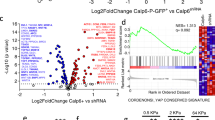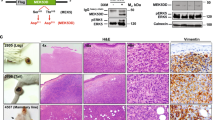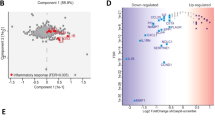Abstract
Plasminogen activator (PLAU) is a serine protease that converts plasminogen to plasmin, a general protease, which promotes fibrinolysis and degradation of extracellular matrix. PLAU was reported in 1970s as one of the robustly induced enzymatic activities in Rous sarcoma virus (RSV)-transformed chicken cells. More than three decades later, with the completion of the sequencing of the chicken genome and the subsequent availability of Affymetrix GeneChip genome arrays, several laboratories have surveyed the transcriptional program affected by the RSV transformation. Interestingly, the PLAU gene was shown to be the most highly upregulated transcript. The induction of PLAU was a transformation-dependent process because viruses with deleted Src gene did not induce the transcription of the PLAU gene. Both Src and PLAU genes are associated with and contribute to the complex phenotype of human cancer. Although the activity and structures of these two enzymes are well characterized, the precise molecular function of these gene products in signaling networks is still not fully understood. Yet, the knowledge of their association with cancer is already translated into the clinical setting. Src kinase inhibitors are being tested in clinical trials of cancer therapy, and PLAU gene and its inhibitor have been included as biomarkers with strong prognostic and therapeutic predictive values. This vignette reviews the history of PLAU and Src discovery, and illuminates the complexity of their relationship, but also points to their emerging impact on public health.
This is a preview of subscription content, access via your institution
Access options
Subscribe to this journal
Receive 50 print issues and online access
$259.00 per year
only $5.18 per issue
Buy this article
- Purchase on Springer Link
- Instant access to full article PDF
Prices may be subject to local taxes which are calculated during checkout



Similar content being viewed by others
References
Annecke K, Schmitt M, Euler U, Zerm M, Paepke D, Paepke S et al. (2008). uPA and PAI-1 in breast cancer: review of their clinical utility and current validation in the prospective NNBC-3 trial. Adv Clin Chem 45: 31–45.
Baltimore D . (1970). RNA-dependent DNA polymerase in virions of RNA tumour viruses. Nature 226: 1209–1211.
Bedard PA, Alcorta D, Simmons DL, Luk KC, Erikson RL . (1987). Constitutive expression of a gene encoding a polypeptide homologous to biologically active human platelet protein in Rous sarcoma virus-transformed fibroblasts. Proc Natl Acad Sci USA 84: 6715–6719.
Bell SM, Brackenbury RW, Leslie ND, Degen JL . (1990). Plasminogen activator gene expression is induced by the src oncogene product and tumor promoters. J Biol Chem 265: 1333–1338.
Bing RJ . (2008). Matter at Heart. Dialogues in Cardiovasc Med 13: 127–130.
Blasi F, Sidenius N . (2010). The urokinase receptor: focused cell surface proteolysis, cell adhesion and signaling. FEBS Lett 584: 1923–1930.
Bork P, Sudol M . (1994). The WW domain: a signalling site in dystrophin? Trends Biochem Sci 19: 531–533.
Brugge JS, Erikson RL . (1977). Identification of a transformation-specific antigen induced by an avian sarcoma virus. Nature 269: 346–348.
Carriero MV, Longanesi-Cattani I, Bifulco K, Maglio O, Lista L, Barbieri A et al. (2009). Structure-based design of an urokinase-type plasminogen activator receptor-derived peptide inhibiting cell migration and lung metastasis. Mol Cancer Ther 8: 2708–2717.
Chen HI, Sudol M . (1995). The WW domain of Yes-associated protein binds a proline-rich ligand that differs from the consensus established for Src homology 3-binding modules. Proc Natl Acad Sci USA 92: 7819–7823.
D'Alessio S, Blasi F . (2009). The urokinase receptor as an entertainer of signal transduction. Front Biosci 14: 4575–4587.
Doolittle RF . (1984). Fibrinogen and Fibrin. Ann Rev Biochem 53: 195–229.
Dubos R . (1979). Peyton Rous. J Exp Med 150: 733–735.
Fischer A . (1925). Beitrag zur Biologie der Gewebezellen. Eine vergleichendbiologische Studie der normalen und malignen Gewebezellen in vitro. Arch Entwieklungsmech Org (Wilhelm Roux) 104: 210–261.
Frankfort BJ, Gelman IH . (1995). Identification of novel cellular genes transcriptionally suppressed by v-src. Biochem Biophys Res Commun 206: 916–926.
Garnier L, Wills JW, Verderame MF, Sudol M . (1996). WW domains and retrovirus budding. Nature 381: 744–745.
Grusche FA, Richardson HE, Harvey KF . (2010). Upstream regulation of the Hippo size control pathway. Curr Biol 20: R574–R582.
Harbeck N, Schmitt M, Paepke S, Allgayer H, Kates RE . (2007). Tumor-associated proteolytic factors uPA and PAI-1: critical appraisal of their clinical relevance in breast cancer and their integration into decision-support algorithms. Crit Rev Clin Lab Sci 44: 179–201.
Harvey K, Tapon N . (2007). The Salvador-Warts-Hippo pathway - an emerging tumour-suppressor network. Nat Rev Cancer 7: 182–191.
Hendricks M, Weintraub H . (1981). Tropomyosin is decreased in transformed cells. Proc Natl Acad Sci USA 78: 5633–5637.
Hennequin LF, Allen J, Breed J, Curwen J, Fennell M, Green TP et al. (2006). N-(5-chloro-1,3-benzodioxol-4-yl)-7-[2-(4-methylpiperazin-1-yl)ethoxy]-5- (tetrahydro-2H-pyran-4-yloxy) quinazolin-4-amine, a novel, highly selective, orally available, dual-specific c-Src/Abl kinase inhibitor. J Med Chem 49: 6465–6488.
Hildenbrand R, Allgayer H, Marx A, Stroebel P . (2010). Modulators of the urokinase-type plasminogen activation system for cancer. Expert Opin Investig Drugs 19: 641–652.
Huang F, Reeves K, Han X, Fairchild C, Platero S, Wong TW et al. (2007). Identification of candidate molecular markers predicting sensitivity in solid tumors to dasatinib: rationale for patient selection. Cancer Res 67: 2226–2238.
Hunter T . (2007). Treatment for chronic myelogenous leukemia: the long road to imatinib. J Clin Invest 117: 2036–2043.
Hunter T, Sefton BM . (1980). Transforming gene product of Rous sarcoma virus phosphorylates tyrosine. Proc Natl Acad Sci USA 77: 1311–1315.
Jahner D, Hunter T . (1991). The stimulation of quiescent rat fibroblasts by v-src and v-fps oncogenic protein-tyrosine kinases leads to the induction of a subset of immediate early genes. Oncogene 6: 1259–1268.
Jallal H, Valentino ML, Chen G, Boschelli F, Ali S, Rabbani SA . (2007). A Src/Abl kinase inhibitor, SKI-606, blocks breast cancer invasion, growth, and metastasis in vitro and in vivo. Cancer Res 67: 1580–1588.
Janicke F, Prechtl A, Thomssen C, Harbeck N, Meisner C, Untch M et al. (2001). Randomized adjuvant chemotherapy trial in high-risk, lymph node-negative breast cancer patients identified by urokinase-type plasminogen activator and plasminogen activator inhibitor type 1. J Natl Cancer Inst 93: 913–920.
Jove R, Hanafusa H . (1987). Cell transformation by the viral src oncogene. Annu Rev Cell Biol 3: 31–56.
Kessenbrock K, Plaks V, Werb Z . (2010). Matrix metalloproteinases: regulators of the tumor microenvironment. Cell 141: 52–67.
Leslie ND, Kessler CA, Bell SM, Degen JL . (1990). The chicken urokinase-type plasminogen activator gene. J Biol Chem 265: 1339–1344.
Lipmann F . (1971). On my way to Copenhagen 1932–1939. In: ‘Wanderings of a Biochemist’. John Wiley and Sons, Inc., New York (ISBN 0-471-54080-3), pp 20–34.
Maeda N, Fan H, Yoshikai Y . (2008). Oncogenesis by retroviruses: old and new paradigms. Rev Med Virol 18: 387–405.
Malek RL, Irby RB, Guo QM, Lee K, Wong S, He M et al. (2002). Identification of Src transformation fingerprint in human colon cancer. Oncogene 21: 7256–7265.
Martin GS . (2004). The road to Src. Oncogene 23: 7910–7917.
Masker K, Golden A, Gaffney CJ, Mazack V, Schwindinger WF, Zhang W et al. (2007). Transcriptional profile of Rous Sarcoma Virus transformed chicken embryo fibroblasts reveals new signaling targets of viral-src. Virology 364: 10–20.
Maslikowski BM, Neel BD, Wu Y, Wang L, Rodrigues NA, Gillet G et al. (2010). Cellular processes of v-Src transformation revealed by gene profiling of primary cells-implications for human cancer. BMC Cancer 10: 41.
Mayer BJ, Hamaguchi M, Hanafusa H . (1988). A novel viral oncogene with structural similarity to phospholipase C. Nature 332: 272–275.
Mayer EL, Krop IE . (2010). Advances in Targeting Src in the Treatment of Breast Cancer and Other Solid Malignancies. Clin Cancer Res 16: 3526–3532.
Mekkawy AH, Morris DL, Pourgholami MH . (2009). Urokinase plasminogen activator system as a potential target for cancer therapy. Future Oncol 5: 1487–1499.
Nagamine Y, Pearson D, Altus MS, Reich E . (1984). cDNA and gene nucleotide sequence of porcine plasminogen activator. Nucleic Acid Res 12: 9525–9541.
Nagamine Y, Sudol M, Reich E . (1983). Hormonal regulation of plasminogen activator mRNA production in porcine kidney cells. Cell 32: 1181–1190.
Ossowski L, Reich E . (1983). Antibodies to plasminogen activator inhibit human tumor metastasis. Cell 35: 611–619.
Patnaik A, Wills JW . (2002). In vivo interference of Rous sarcoma virus budding by cis expression of a WW domain. J Virol 76: 2789–2795.
Paz K, Socci ND, van Nimwegen E, Viale A, Darnell JE . (2004). Transformation fingerprint: induced STAT3-C, v-Src and Ha-Ras cause small initial changes but similar established profiles in mRNA. Oncogene 23: 8455–8463.
Pincetic A, Medina G, Carter C, Leis J . (2008). Avian sarcoma virus and human immunodeficiency virus type 1 use different subsets of ESCRT proteins to facilitate budding process. J Biol Chem 283: 29822–29830.
Ren R, Mayer BJ, Cicchetti P, Baltimore D . (1993). Identification of a ten-amino acid proline-rich SH3 binding site. Science 259: 1157–1161.
Rous P . (1910). A Transmissible Avian Neoplasm. (Sarcoma of the Common Fowl.). J Exp Med 12: 696–705.
Rous P . (1911). A Sarcoma of the Fowl Transmissible by an Agent Separable from the Tumor Cells. J Exp Med 13: 397–411.
Saad F, Lipton A . (2009). SRC kinase inhibition: targeting bone metastases and tumor growth in prostate and breast cancer. Cancer Treat Rev 36: 177–184.
Sadowski I, Stone JC, Pawson T . (1986). A noncatalytic domain conserved among cytoplasmic protein-tyrosine kinases modifies the kinase function and transforming activity of Fujinami sarcoma virus P130gag-fps. Mol Cell Biol 6: 4396–4408.
Schmitt M, Harbeck N, Daidone MG, Brynner N, Duffy MJ, Foekens JA et al. (2004). Identification, validation, and clinical implementation of tumor-associated biomarkers to improve therapy concepts, survival, and quality of life of cancer patients: tasks of the Receptor and Biomarker Group of the European Organization for Research and Treatment of Cancer. Int J Oncol 25: 1397–1406.
Schmitt M, Harbeck N, Thomssen C, Wilhelm O, Magdolen V, Reuning U et al. (1997). Clinical impact of the plasminogen activation system in tumor invasion and metastasis: prognostic relevance and target for therapy. Thromb Haemost 78: 285–296.
Stefansson S, McMahon GA, Petitclerc E, Lawrence DA . (2003). Plasminogen activator inhibitor-1 in tumor growth, angiogenesis and vascular remodeling. Curr Pharm Des 9: 1545–1564.
Stehelin D, Varmus HE, Bishop JM, Vogt PK . (1976). DNA related to the transforming gene(s) of avian sarcoma viruses is present in normal avian DNA. Nature 260: 170–173.
Sudol M . (1985). Hormonal regulation of protein synthesis in cultured kidney cells. Mol Cell Endocrinol 40: 245–255.
Sudol M . (1994). Yes-associated protein (YAP65) is a proline-rich phosphoprotein that binds to the SH3 domain of the Yes proto-oncogene product. Oncogene 9: 2145–2152.
Sudol M . (2006). Blacksmith of words. Letter to the Editor on the centennial of the birth of Samuel Beckett. The Danville News (Pennsylvania), 16 August issue.
Sudol M, Bork P, Einbond A, Kastury K, Druck T, Negrini M et al. (1995). Characterization of the mammalian YAP (Yes-associated protein) gene and its role in defining a novel protein module, the WW domain. J Biol Chem 270: 14733–14741.
Sudol M, Harvey KF. (2010). Modularity in the Hippo signaling pathway. Trends Biochem Sci 35: 627–633.
Sudol M, Reich E . (1984). Purification and characterization of a plasminogen activator secreted by a pig kidney cell line. Biochem J 219: 971–978.
Sugano S, Stoeckle MY, Hanafusa H . (1987). Transformation by Rous sarcoma virus induces a novel gene with homology to a mitogenic platelet protein. Cell 49: 321–328.
Suzuki Y . (2010). Role of tissue-type plasminogen activator in ischemic stroke. J Pharmacol Sci 113: 203–207.
Tapia VE, Nicolaescu E, McDonald CB, Musi V, Oka T, Inayoshi Y et al. (2010). The Y65C missense mutation in the WW domain of the Golabi-Ito-Hall syndrome protein PQBP1 affects its binding activity and deregulates pre-mRNA splicing. J Biol Chem 285: 19391–19401.
Temin HM, Mizutani S . (1970). RNA-dependent DNA polymerase in virions of Rous sarcoma virus. Nature 226: 1211–1213.
Thomssen C, Harbeck N, Dittmer J, Abraha-Spaeth SR, Papendick N, Paradiso A et al. (2009). Feasibility of measuring the prognostic factors uPA and PAI-1 in core needle biopsy breast cancer specimens. J Natl Cancer Inst 101: 1028–1029.
Ulisse S, Baldini E, Sorrenti S, D'Armiento M . (2009). The urokinase plasminogen activator system: a target for anti-cancer therapy. Curr Cancer Drug Targets 9: 32–71.
Unkeless JC, Tobia A, Ossowski L, Quigley JP, Rifkin DB, Reich E . (1973). An enzymatic function associated with transformation of fibroblasts by oncogenic viruses. I. Chick embryo fibroblast cultures transformed by avian RNA tumor viruses. J Exp Med 137: 85–111.
Vogt PK . (2010). Oncogenes and the revolution in cancer research: homage to Hidesaburo Hanafusa (1929–2009). Genes Cancer 1: 6–11.
Xu W, Harrison SC, Eck MJ . (1997). Three-dimensional structure of the tyrosine kinase c-Src. Nature 385: 595–602.
Acknowledgements
Special thanks are to Mario Gimona for translating the 1925 publication of Fischer from German to English and for valuable comments on the text, Bethany Antos and Lee Hiltzik from the Rockefeller Archive Center for the photographs and information about 1979 Rous Centennial. Kathy Sheridan and Peter K Vogt are thanked for valuable comments on the early version of the manuscript, and Angelika Barnekow for a fruitful collaboration and permission to mention our unpublished data. I am grateful to my PhD mentors Ed Reich and Wolf-Dieter Schleuning, my senior colleagues Mary Rifkin, Tony Cerami, Sidney Strickland, Jean-Dominique Vassalli, Yoshi Nagamine, Michael W Young, and my peers Michael E Greenberg, Michael Yamin and Ned Waller for their guidance throughout my Rockefeller tenure. My postdoctoral mentor, the late Hidesaburo Hanafusa, is remembered with warmth. This work was supported by PA Breast Cancer Coalition grants and by Geisinger Clinic.
This mini-review is not meant to comprehensively discuss all relevant publications. The references are intentionally selective and the author apologizes for omission of many pertinent publications, and for the myopic focus of this article.
Author information
Authors and Affiliations
Corresponding author
Ethics declarations
Competing interests
The author declares no conflict of interest.
Additional information
Supplementary information accompanies the paper on the Oncogene website
Rights and permissions
About this article
Cite this article
Sudol, M. From Rous sarcoma virus to plasminogen activator, src oncogene and cancer management. Oncogene 30, 3003–3010 (2011). https://doi.org/10.1038/onc.2011.38
Received:
Revised:
Accepted:
Published:
Issue Date:
DOI: https://doi.org/10.1038/onc.2011.38
Keywords
This article is cited by
-
PLAU directs conversion of fibroblasts to inflammatory cancer-associated fibroblasts, promoting esophageal squamous cell carcinoma progression via uPAR/Akt/NF-κB/IL8 pathway
Cell Death Discovery (2021)
-
Coordinated expression of vascular endothelial growth factor A and urokinase-type plasminogen activator contributes to classical swine fever virus Shimen infection in macrophages
BMC Veterinary Research (2019)
-
Evidence of Cardiovascular Calcification and Fibrosis in Pseudoxanthoma Elasticum Mouse Models Subjected to DOCA-Salt Hypertension
Scientific Reports (2019)
-
DNA methylation-associated silencing of tumor-suppressor microRNAs in cancer
Oncogene (2012)



